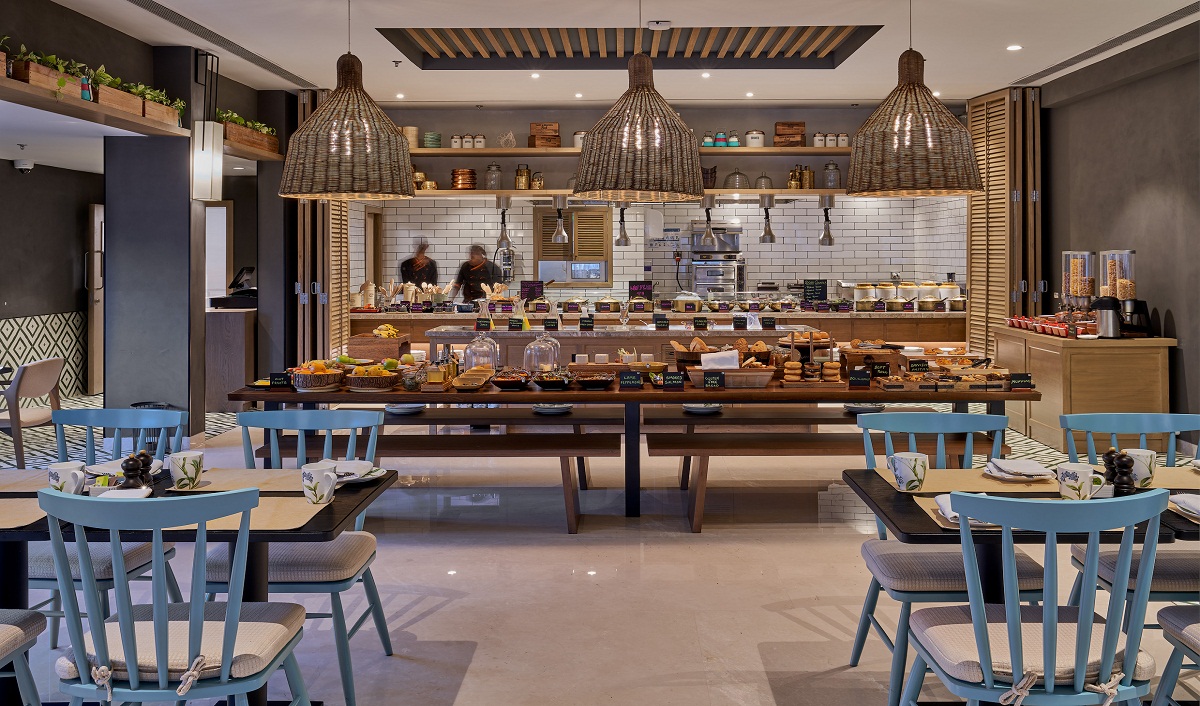
Imagine stepping into a classic yet sleek restaurant in one of the most posh areas in town. It feels like stepping into a different world away from the hustle and bustle of the city. The space is carefully designed to provide a luxurious escapade to customers. Fine dining is a holistic experience that offers highly upscale and offers sophisticated services with the best quality food. Creating the perfect fine dining establishment goes beyond the general norms of restaurant design and is about being able to indulge every sense to create a refreshing and unique experience. Designing such spaces can be tricky but the key to solving the mystery of designing fine-dine restaurants is to maintain subtlety while creating huge impact on the customer.
Here are a few design elements that need to be deliberated over to create the best experience:
Differentiating Factor
The most important effect that design should create in a fine dining space is the sense of providing a new and different experience. It is vital for every such establishment to have a distinctive feature that is unique to them, which ensures regular customers. This can be in terms of a theme, a signature art piece or a new experiential factor. The restaurant should essentially have a personality of its own that sets it apart from the sea of other establishments in the area. This can be created by maintaining a design philosophy that carries through every aspect of the restaurant from the choice of materials to furniture to lighting. Themed restaurants especially, have to take extra effort in creating designs that hint at the concept without being blaringly obvious.
Colour Scheme
Colours play an integral role in defining the mood as each colour evokes a certain kind of emotion. For example, red or yellow are usually lively and energetic colours which are traditionally used in fast food joints while gold and white are generally associated to serenity and luxury. Thus, it is important to pick the right colour scheme to depict the kind of lavishness that a fine dining experience entails. A busy colour palette can often be a negative factor in designing such spaces as it evokes a sense of urgency to customers. It is important to maintain the same scheme throughout the restaurant so as to make the patrons feel at ease.
Lighting
Mood lighting is a very pivotal design aspect of fine dining restaurants. Apart from contributing to the mood and ambience of the restaurant, lighting is an important aspect of maximizing efficiency along with maintaining aesthetic appeal. Smart lighting can provide a way to create individual zones, thus, crafting a sense of privacy for individual tables. Lighting can also act as an added aesthetic feature with signature pieces featured in the center of the room or the lobby. Exquisite chandeliers and unique light fixtures can play an important role in enhancing the luxurious feel of a space.
Furniture & Seating Layout
Fine dining is synonymous to luxury and elegance and the materials picked out for the furnishings and floors of the restaurant space should depict the same. Materials like marble, leather and glass are some of the common choices that portray opulence. Such restaurants often have regular patrons who appreciate privacy during their time at the restaurant. Thus, it is important to have considerable distance between tables for each table to have their own private space despite being in a large common area. It is also better to not place tables near the entry, the kitchen or the washrooms as this will cause disturbance in the customer experience. Lastly, a fine dining experience is about luxury and comfort. It is important to ensure comfort despite the intricacies of the design of the restaurant. Seemingly irrelevant details like the proportion of height of the table to the chair or the material of the cushions picked out play a big role in providing comfort and a sense of generosity to the space.
Kitchen Design & Equipment
While the front-end of a restaurant plays a pivotal role in bringing in customers, the back of the house is key in retaining the customers and ensuring repeat visits. The kitchen needs to be adapted according to the theme of the establishment. A cultural themed restaurant requires certain specialised equipment to cater to providing a holistic immersive experience. The equipment inside should be in tandem with the menu presented outside to ensure quick and quality service of orders. For example, a Chinese themed restaurant would require large woks while a farm-to-table restaurant would require ample space for storage and preparation of fresh produce.
Creating a fine dining experience is about creating a massive impact through subtle elements. Design elements in such spaces have to create a distinct but cohesive picture in line with the aesthetic and mood of the restaurant. Fine dining restaurants today even have subtly personalised tableware and cutlery that ensures a consistent vision. Thus, through small but effective details, fine dining restaurants are designed to leave a strong underlying impact, helping them build their legacy & patronage.
Copyright © 2009 - 2024 Restaurant India.









